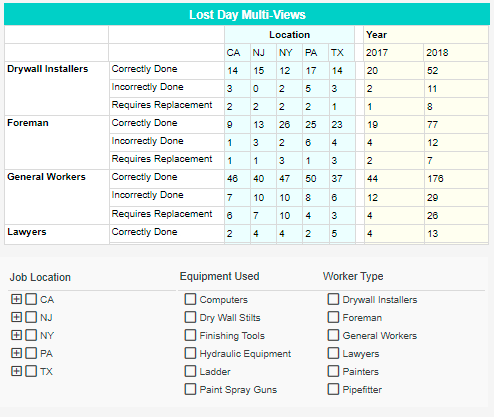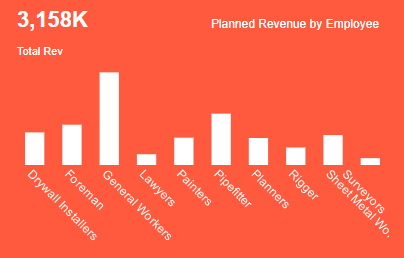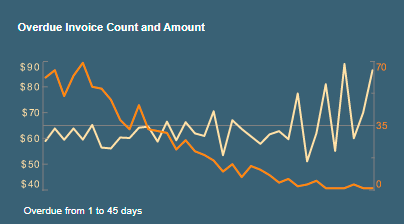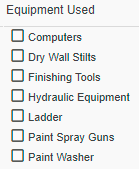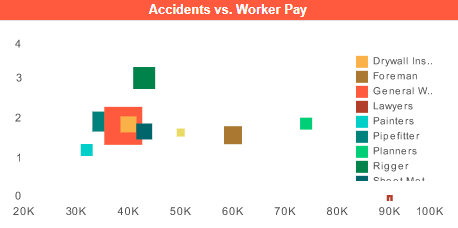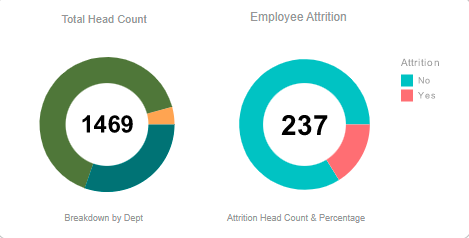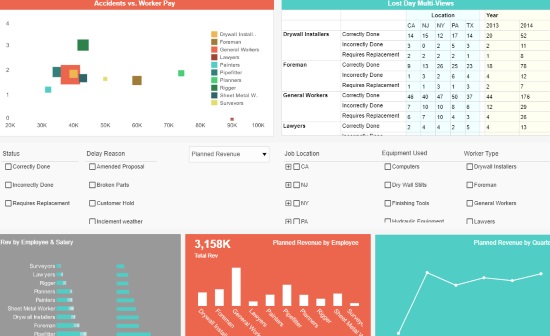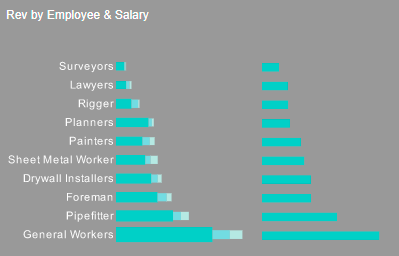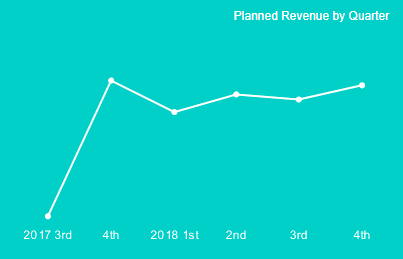How BI & Data Analytics Can Boost Efficiency in The Construction Sector
Your guide to data-driven innovation in the construction sector
As an essential and ever-expanding sector, the construction industry commands collaboration, communication, and razor-sharp operational vision.
The problem is that with so many sites and personnel to manage at any one time, many construction organizations suffer from a level of fragmentation that leads to financial and logistical inefficiency.
To ensure that a building project is safe and successful, adhering to a colossal amount of regulations and red tape is mandatory.
With so many governing bodies, organizations, and personnel involved in a single construction initiative (often spread across several sites), forward-thinking industry players are utilizing business intelligence (BI) solutions to take charge of their commercial destiny.
The construction industry is becoming an increasingly challenging landscape. To succeed in the long term, embracing the power of BI and data analytics is vital.
Here, we look at how BI and data analytics are unifying the construction industry and resulting in greater success for everyone involved in the sector.
| #1 Ranking: Read how InetSoft was rated #1 for user adoption in G2's user survey-based index | Read More |
Why are BI and data analytics important in the construction industry?
Without a clear-cut vision or definitive ways to measure or benchmark progress, many construction projects fall behind key deadlines while overshooting their budgets.
The key reason why using analytical BI solutions and dashboard software in the construction industry is so important comes down to the sheer scale or scope of the task at hand.
If you work with BI-boosting dashboard software, your construction company will:
- Gain a panoramic picture of overall organizational progress and the success of particular projects
- Streamline budgets and reduce unnecessary costs
- Improve personal distribution and management
- Enhance collaboration and communication between departments, partners, and sites
- Accelerate organizational growth, progress, and personal development across the board
"Torture the data, and it will confess to anything." - Ronald Coase, Economics, Nobel Prize Laureate
How BI and data analytics are improving the construction sector
BI and data analytics are becoming standard within the construction industry. Through advanced insight and universal access to visual data, the industry as a whole is becoming a cohesive unit.
Silos, miscommunication, and fragmentation (largely between contractors, sites, and departments) once plagued the industry. But BI solutions and dashboard software are building the blocks of a brighter future. Here's how.
Financial & budgetary efficiency
One of the biggest roadblocks to the success of any construction project is budgets and costs. Without an accessible, accurate means of managing budgets and tracking expenditure, many construction companies find themselves in hot financial water.
With dashboard software and analytical solutions, it's possible to create estimates based on concrete historical, real-time, and predictive insights. This allows construction companies to create budgets built for success and track fiscal progress with ease.
Using visual BI solutions, construction seniors can communicate concrete financial insights with their suppliers or partners. It's also possible to track any issues that are sapping budgets (whether it's defective tools or a lack of productivity) through visual key performance indicators (KPIs) and develop strategies to eliminate these unnecessary costs.
Did you know? A leading construction firm that was tasked with the challenge of renovating key sections of one of London's busiest passenger airports without disrupting traffic flow or current operations invested in BI technology.
By doing so, the firm empowered its senior personnel across departments with visual information designed to track ongoing costs and delivery timelines swiftly and without restrictions. As a result, the firm reduced overall project costs while exceeding delivery deadlines.
 |
Read the latest news about InetSoft's user friendly BI software and customer successes. |
Smart material tracking
Expanding on our last point: gaining a panoramic view of your data also means that construction professionals can manage materials more effectively.
Without materials, construction projects wouldn't exist. Through smart material tracking, it's possible to identify any defective materials that require disposal while visually tracking your entire fulfillment and supply chain.
Armed with this level of real-time insight, you can quickly uncover trends that will allow you to improve supplier relationships while ensuring every key stakeholder in the process can get to grips with material delivery processes and expected quantities.
When everyone has access to BI-based and analytics insights, communication thrives. If there are any inefficiencies in terms of material quality, distribution, or delivery initiatives, everyone involved can brainstorm solutions by logging into dashboard software and sharing insights backed by concrete data.
Another powerful way BI solutions help construction firms improve material management is by identifying any substandard suppliers. If your KPIs are telling you that a supplier is struggling to fulfill its promises or frequently supplies defective materials, you can end your relationship before the situation spirals out of control.
Increased health and safety
Without a doubt, risk management is vital across every area of the construction industry. As a company in a high-risk sector, ensuring your projects remain compliant while protecting the overall safety of your operations and personnel is not optional-it's mandatory.
Did you know? Health & safety violations carry a maximum penalty of $13,653. These red-tape violations also have a knock-on effect of additional costs, including insurance premiums and project delays.
Dashboard software equipped with machine learning (ML) capabilities not only helps construction firms track whether every site, contractor, or worker is up-to-date concerning safety credentials or certification, but it can also help predict risk.
Autonomous technologies can offer a visual representation of potential site risks using a cohesive mix of insights. With this data analytics-driven approach, construction safety managers can swiftly identify potential areas that comprise health and safety, putting preventative measures in place in the process.
Remaining compliant across multiple sites and locations is a colossal task that requires everyone to be on board. Using data dashboards will ensure you can mitigate, avoid, and track safety issues with confidence, avoiding potentially disastrous situations or fines.
 |
Read the top 10 reasons for selecting InetSoft as your BI partner. |
Personnel management
Another particularly fragmented part of construction is personnel management. Without skilled tradespeople or contractors, a construction project would grind to a swift halt.
This means its vital to ensure that everyone involved in a project across sites is eligible, compliant (as mentioned), and managed with pinpoint precision.
However, high staff turnover, coupled with the significant geographical spread of construction sites, presents many personnel management challenges. Senior decision-makers need a forward-thinking approach to their personnel strategies to ensure long-term success.
The rising demand for skilled workers within the construction industry has exposed a wealth of personnel management problems and communication breakdowns in recent years:
- Site access as a result of work permits and a lack of clearance or credentials
- The maintenance of certifications to conduct certain tasks and projects
- Proof of health status (this has been especially pressing in the wake of the pandemic)
This triple-stacked challenge is creating huge bottlenecks for construction seniors as a result of site access delays and poor management decisions that result in significant productivity or project delivery issues.
Broken and sluggish traditional processes are costing construction firms unfathomable amounts of time and money and causing staff turnover issues that are spiraling out of control.
To take charge of their personnel management processes, many modern construction firms are turning to dashboard software to understand where they need to place their tradespeople and contractors while ensuring everyone has access to work at all times.
This intuitive construction industry dashboard example is a prime example of BI and data analytics in the building sector.
Here, every key stakeholder can access the data-driven insights they need in an instant. With access to accident and worker pay trends, as well as a wealth of critical information like job delivery success and planned revenues, construction companies can manage every core aspect of the business with complete confidence.
Not only do BI and data analytics tools help construction firms maximize their most valuable data—dashboard software also offers a viable way of placing everyone on the same page. And when that happens, the industry as a whole thrives.
 |
View the gallery of examples of dashboards and visualizations. |
BI and data analytics: The building blocks of a brighter future
"Data is becoming the new raw material of business."-Chris Lynch, CEO and data expert
Whether you work on commercial, residential, or publicly funded construction projects, BI solutions and dashboard software are the tools that will transform your data into actionable insight.
Working in a high-risk and incredibly demanding sector is no easy feat. But BI and data analytics are the light in the dark.
By creating a culture centered on BI and data analytics, you can break down communication barriers while improving the collaborative processes. Dashboard software will provide the right people with a central view of every key operation at any given time: no more missed opportunities, no more questionable decision-making, and no more operational roadblocks.
BI and data analytics are unifying the construction industry, one data-driven building block at a time. Embrace the power of data, and your organization will thrive.
For more insights on the power of business intelligence, read our exploration of how data intelligence can improve performance in the energy and utilities industries.
Sources:
How Big Data and Analytics are Transforming the Construction Industry (esub.com)
How Big Data Can Transform the Construction Industry (constructconnect.com)
Why is Big Data & Analytics Important in the Construction Industry - CMiC (cmicglobal.com)
https://constructible.trimble.com/construction-industry/the-benefits-of-ai-in-construction
4 Ways Construction Companies Can Use Business Intelligence (trimble.com)
 |
Read how InetSoft was rated #1 for user adoption in G2 Crowd's user survey-based index. |
